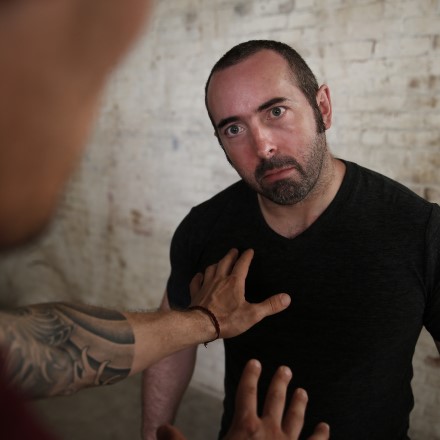De-escalation and Conflict Resolution

Articles On De-escalation & Conflict Resolution
- Dealing With Angry People - De-escalation
- Lessons From Hostage/Crisis Negotiators
- Dealing With Anger
- De-escalation - Saying Sorry
- Backing Down & Backing Away
- Krav Maga And Conflict Resolution
- De-escalation, Reflective Listening & Non-Complimentary Behavior
- Conflict Communication & Active Listening
- Communication Content
- Win-Win Outcomes
- Conflict Negotiation
- Active Listening
- De-escalate Everything
- Social Information Processing
- The Effects Of Emotions On Social Information Processing
- Another Look At Active Listening
- Active Listening & Changing Behaviors
- Communicating in Conflict
- Letting People Be Wrong
- Two Tactics for De-escalation
All Personal Safety Articles
De-escalating Potentially Violent Situations
Being able to de-escalate an aggressive and potentially violent situation is a key self-protection skill. Whilst not all situations can be de-escalated i.e., those involving predatory individuals who have a defined goal and outcome in mind, many incidents of spontaneous or social violence can. We are far more likely to find ourselves dealing with angry people who have become aggressive due to something we have done – or they think/believe we have done – in social settings, than predatory individuals who have actively targeted us e.g., such as a mugger or abductor etc. In almost every social situation there is the potential for conflict, as somebody can take exception at the way we act and behave e.g., we could accidentally bump into them, step on their foot, inadvertently jump ahead of them in a queue/line, or take a parking place they were waiting for (without realizing it) etc. Any social interaction has the potential to cause a conflict, and so from a statistical perspective, these are the types of situations we are more likely to find ourselves dealing with. Fortunately, with good de-escalation skills we can avoid them from becoming physically violent.
To be able to be effective in our de-escalation, we must first understand how people, when angry and aggressive see the world. It is important to recognize how our actions and behaviors, and what we say, are interpreted, when people are highly emotional. People in heightened emotional states don’t employ the same methods of thinking as when they are calm. Expecting to be successful when interacting with an emotional person, by dealing with them in the same way as when they are calm, is a false assumption. A highly aroused individual will be viewing “normal” behaviors, and speech, in the context of whether it is a threat or not. In many ways anything that is being said will be interpreted as “fighting talk”, even if this is not the intention of the person saying it etc. By learning how to say things in a way that doesn’t inflame an already tense situation it is possible to start taking the emotion out of a situation, and it is then that a non-violent resolution to the conflict can be sought.
Drawing on the same techniques and methods that are used by negotiators, who deal in hostage/barricade situations, where they may need to talk down a possible hostage taker, and/or suicidal individual, it is possible to de-escalate and resolve many lower-level, and ordinary, day-to-day conflict that could potentially result in physical violence. With some modification to make them context appropriate tools such as active listening and reflection etc., can be used to deal with many spontaneous acts of aggression, which result from reactive anger, where an individual becomes aggressive due to something that has happened, or they believe, has happened to them etc. Understanding effective de-escalation methods and knowing how and when to deploy them can help us manage and avert many situations that would otherwise turn violent, which is ultimately the goal of self-protection and personal safety.
References
Price, O., Baker, J., Bee, P., Grundy, A., Scott, A., Butler, D., Cree, L., & Lovell, K. (2018). Patient perspectives on barriers and enablers to the use and effectiveness of de‐escalation techniques for the management of violence and aggression in mental health settings. Journal of Advanced Nursing 74(3): 614-625.
Royce, T. (2005). The Negotiator and the Bomber: Analyzing the Critical Role of Active Listening in Crisis Negotiations. Negotiation Journal, 21(1).
Todak, N., & James, L. (2018). A Systematic Social Observation Study of Police De-Escalation Tactics. Police Quarterly 21(4): 509-543.